Picnic all’italiana
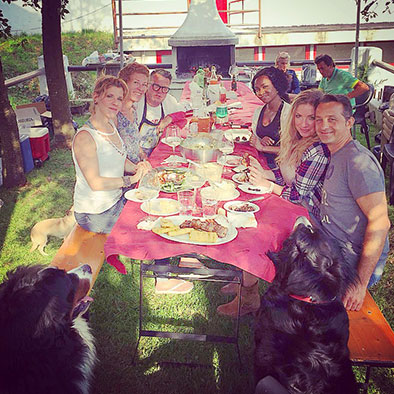 It’s common knowledge that Italy offers some of the world’s most renowned dining experiences ranging from Michelin star fine dining establishments to hidden gems like off the beat trattorias, but do not underestimate the quality gastronomic experience a properly organized outdoor picnic can provide. Spring through Fall, Italians always find an excuse to get outdoors and the art of the picnic is no exception: what’s better than feasting on delicious regional specialties and sipping luscious wines in good company while doing it all at a budget nonetheless?!
It’s common knowledge that Italy offers some of the world’s most renowned dining experiences ranging from Michelin star fine dining establishments to hidden gems like off the beat trattorias, but do not underestimate the quality gastronomic experience a properly organized outdoor picnic can provide. Spring through Fall, Italians always find an excuse to get outdoors and the art of the picnic is no exception: what’s better than feasting on delicious regional specialties and sipping luscious wines in good company while doing it all at a budget nonetheless?!
In order to gather all the essentials of a truly authentic Italian picnic toss your reusable shopping bags in the front basket of your bicicletta (bicycle) and hit the village streets like a true local. In under an hour you can hit a half dozen of the following neighborhood negozi (shops) to score local goodies fundamental to creating the most perfetto picnic all’italiana.
Panificio (bakery): first and foremost don’t forget the pane! Grab some crusty loaves of rustic bread, soft rosemary focaccias or simple sandwich rolls, available in various types of flour and grains depending on your taste. Artisanal breadsticks & pizzette (mini pizzas) are always a good idea to stock up on too while you’re there.
Salumeria (deli): get lost in bountiful displays of aged hams, Fratelli Beretta salami and roasts including mortadella, parma ham and porchetta. Order by the “etto”( 100gr) so you can taste a number of different specialties.
Latteria (cheese shop): pick a few of your favorites from classic fresh mozzarella pearls simply served on toothpicks to aged parmiggiano easy enough to crumble and pair with some local honey.
Enoteca (wine shop): now that you’ve got your main ingredients down it’s time to hit the wine shop to find the perfect vino to enhance your authentic spread- don’t be hesitant to try the local wines available on draft, the shop assistant will just use any empty water bottles you bring.
Fruttivendolo (fresh produce shop): these mom & pop style shops offer seasonal fruit and vegetables so look for picnic friendly options like clementines, apples or sliced melon depending on the season. A handful of nuts and a small container of marinated olives are always a winning addition as well.
Pasticceria (pastry shop): Don’t forget to pick out a few pastine (mini pastries) like almond tarts or chocolate truffles to pair with that glass of sweet dessert wine at the end of the meal.
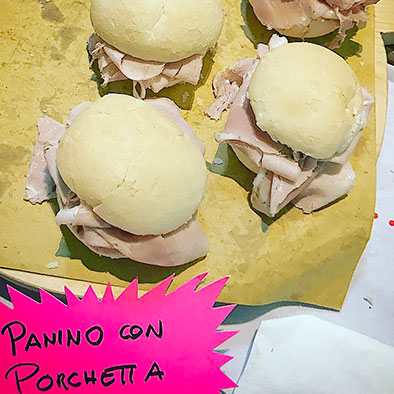 If you’re not in the mood to embark on a such a cultural adventure by meandering through these shops you can always just run into a paninoteca (sandwich shop) for a classic brown bag style picnic and have them make up a few plain panini (sandwiches). Otherwise a local rosticceria (fry shop) will offer a small selection of ready-made sides and “take away” roast chickens. Either way, with just less than 10 euros a person a real Italian feast fit for a king can be thrown together pretty quickly, especially when a bunch of friends meet up to share the potluck affair.
If you’re not in the mood to embark on a such a cultural adventure by meandering through these shops you can always just run into a paninoteca (sandwich shop) for a classic brown bag style picnic and have them make up a few plain panini (sandwiches). Otherwise a local rosticceria (fry shop) will offer a small selection of ready-made sides and “take away” roast chickens. Either way, with just less than 10 euros a person a real Italian feast fit for a king can be thrown together pretty quickly, especially when a bunch of friends meet up to share the potluck affair.
Don’t forget basic picnic supplies, especially a good knife and a corkscrew for that divine wine!
Ideal picnic spots aren’t just majestic hilltops and wild flower fields- get creative and find a cozy spot even in the larger cities including parks and gardens, just not directly at a major monument.
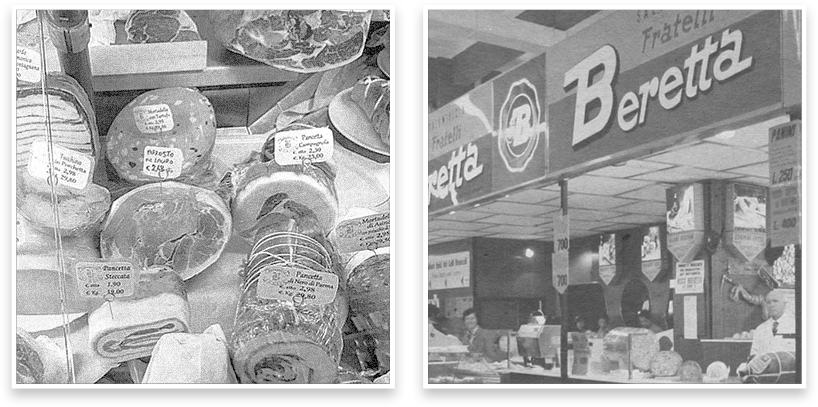
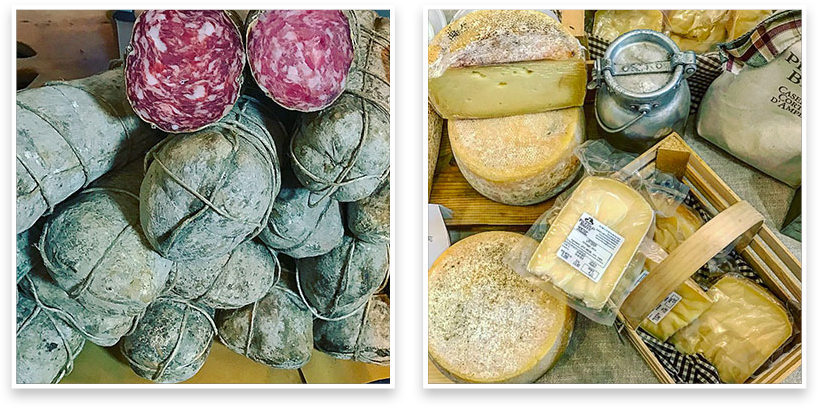
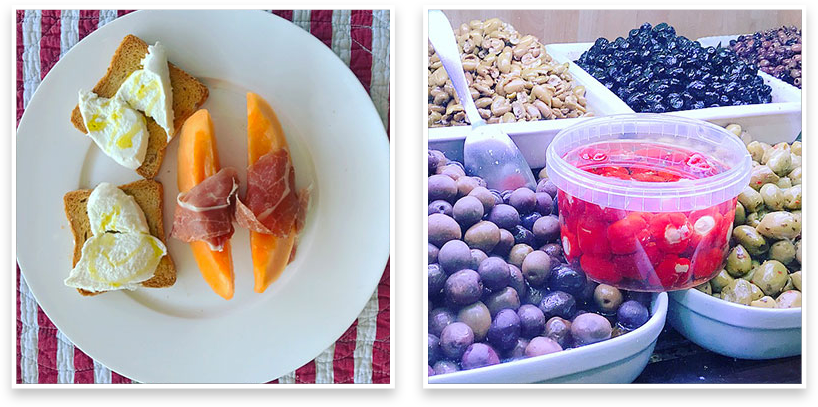

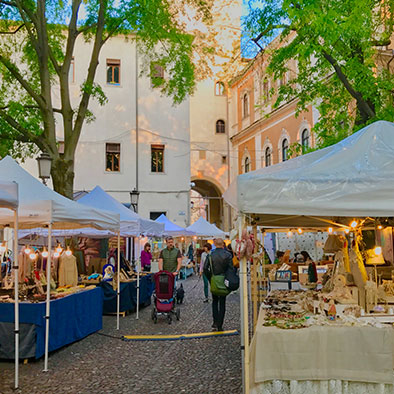 One of the best ways to experience local culture in Italy is to visit & explore various regional open air markets. For a true glimpse and taste of the “la dolce vita” dive into an authentic piazza “mercato”: you name it and you can usually find it from fresh produce, fish, meat, salami, cheese, honey, chocolate, spices, pasta, rice, nuts, wine, flowers, plants, clothing, antiques, hardware, linens, purses, luggage and eyewear. From medieval village squares to the main cities’ large piazzas, outdoor markets are abound this time of year. Typical setups range from old-world charm permanent stone arcade stalls to simple tent-like booths. Italian vendors put on quite a display of goods- these are not your basic farmers markets so take your time to stroll around and absorb the authentic atmosphere.
One of the best ways to experience local culture in Italy is to visit & explore various regional open air markets. For a true glimpse and taste of the “la dolce vita” dive into an authentic piazza “mercato”: you name it and you can usually find it from fresh produce, fish, meat, salami, cheese, honey, chocolate, spices, pasta, rice, nuts, wine, flowers, plants, clothing, antiques, hardware, linens, purses, luggage and eyewear. From medieval village squares to the main cities’ large piazzas, outdoor markets are abound this time of year. Typical setups range from old-world charm permanent stone arcade stalls to simple tent-like booths. Italian vendors put on quite a display of goods- these are not your basic farmers markets so take your time to stroll around and absorb the authentic atmosphere.
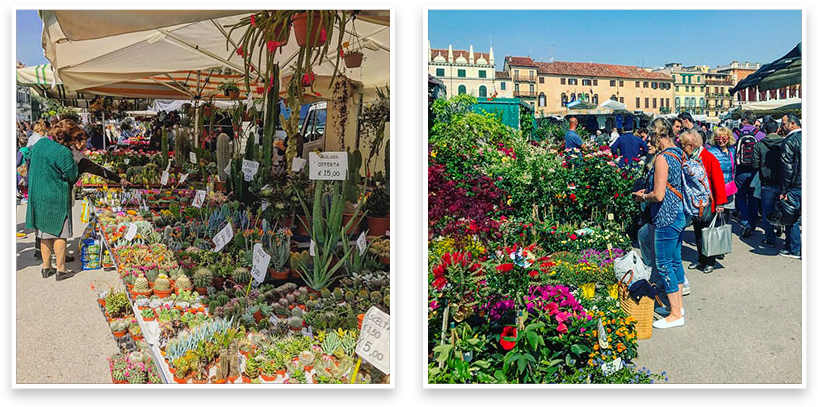
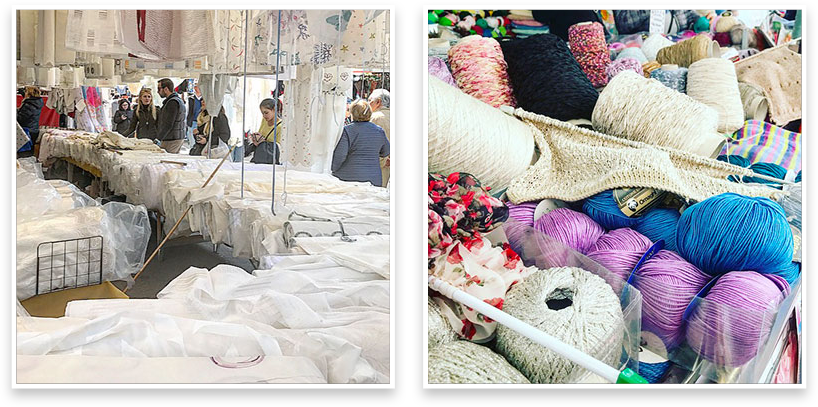
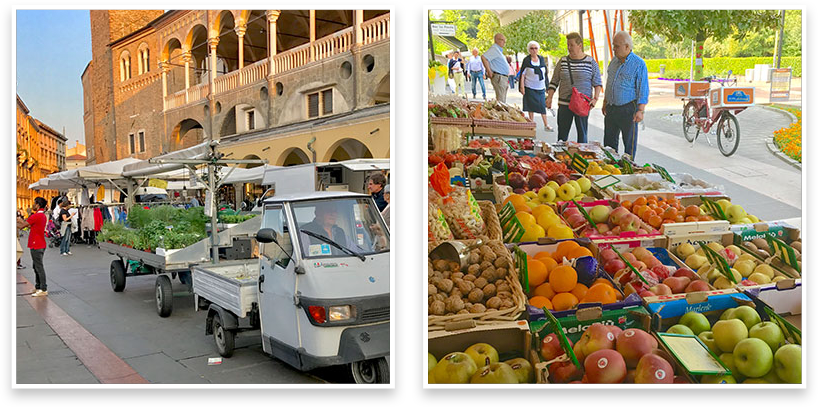
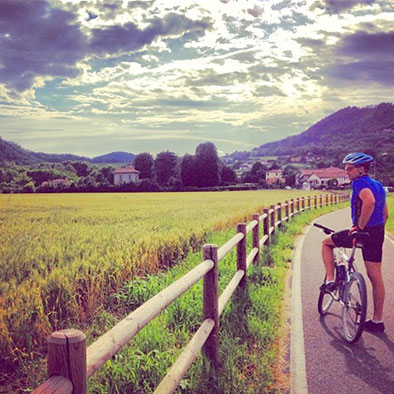 With the arrival of sunnier, warmer days, Spring in Italy is the perfect time of year to spend more time outdoors. Mild temperatures and longer daylight hours provide ideal conditions for leisure activities. Italians thrive on being in touch with nature so the cool aria fresca (fresh air) of early Spring allows for numerous opportunities to head outside before the real summer Italian heat kicks in. Of course this season is beautiful in many regions of the world, but the Bel Paese truly offers magical and stunning views of verdant landscapes over the next couple of months. It’s also an ideal time to travel as the tourist season is just commencing, so, before the hordes of international crowds arrive, many Italians take mini vacations & road trips across the peninsula to discover new captivating places.
With the arrival of sunnier, warmer days, Spring in Italy is the perfect time of year to spend more time outdoors. Mild temperatures and longer daylight hours provide ideal conditions for leisure activities. Italians thrive on being in touch with nature so the cool aria fresca (fresh air) of early Spring allows for numerous opportunities to head outside before the real summer Italian heat kicks in. Of course this season is beautiful in many regions of the world, but the Bel Paese truly offers magical and stunning views of verdant landscapes over the next couple of months. It’s also an ideal time to travel as the tourist season is just commencing, so, before the hordes of international crowds arrive, many Italians take mini vacations & road trips across the peninsula to discover new captivating places.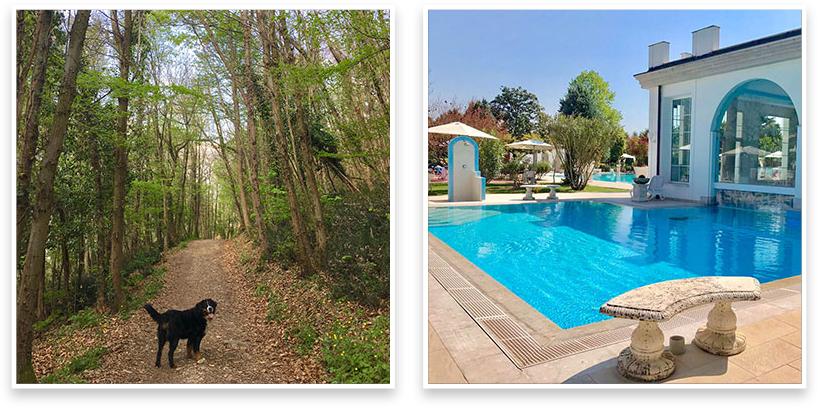
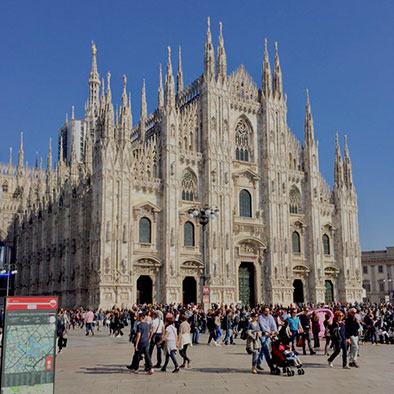 L’ACQUA
L’ACQUA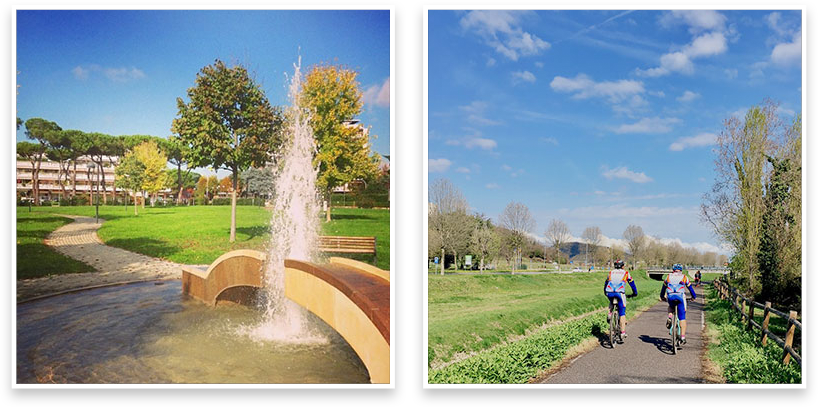
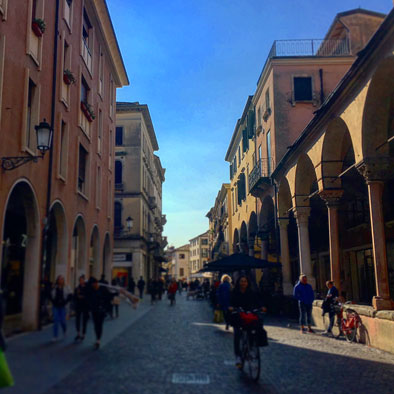
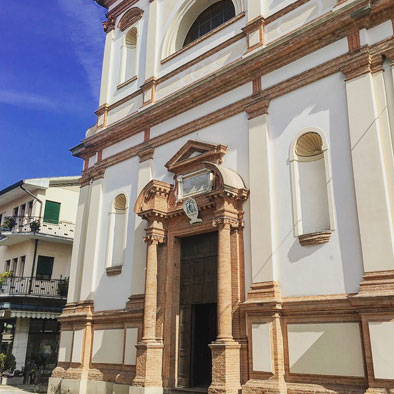 Italy wide the gastronomic tradition focuses on specialty sweets & desserts as well as breads & cookies that vary from region to region. Joseph is honored by the Italians with a unique pastry because as the legend goes, he once made & sold puff pastry style sweets in between carpentry jobs. Another legend recounts that the actual crumbs symbolize sawdust & therefore recall his artisanal carpentry profession.
Italy wide the gastronomic tradition focuses on specialty sweets & desserts as well as breads & cookies that vary from region to region. Joseph is honored by the Italians with a unique pastry because as the legend goes, he once made & sold puff pastry style sweets in between carpentry jobs. Another legend recounts that the actual crumbs symbolize sawdust & therefore recall his artisanal carpentry profession.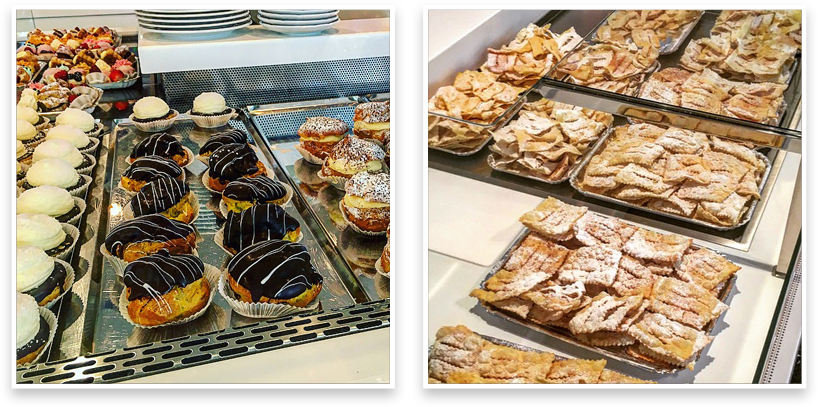 In Northern Italy tradition calls for the classic frittelle “fritter dough balls” and crostoli, a thin puff pastry sprinkled with powdered sugar. Most Italian mammas have their own special family recipe & of course every bakery & pastry shop fills their windows this time of year with take-away trays for the household feast.
In Northern Italy tradition calls for the classic frittelle “fritter dough balls” and crostoli, a thin puff pastry sprinkled with powdered sugar. Most Italian mammas have their own special family recipe & of course every bakery & pastry shop fills their windows this time of year with take-away trays for the household feast.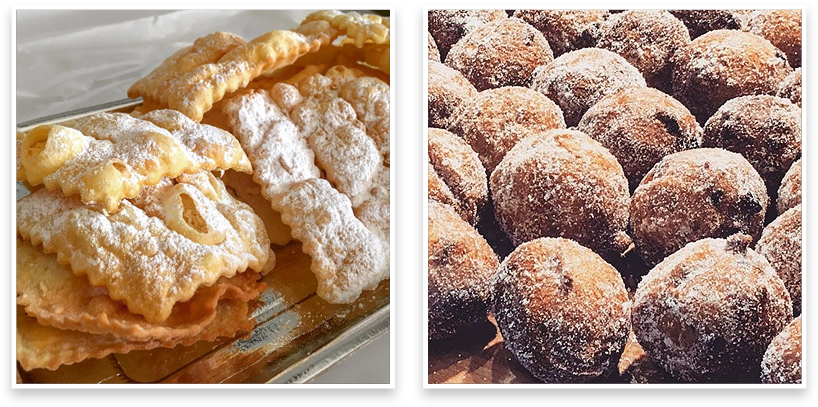 In Southern Italy, especially in Sicily, the family ritual involves preparing an abundant buffet style large table, often with an altar dedicated to Saint Joseph, with all the lovingly crafted delicacies perfectly decorated & plated to gaze upon. Towering breads & pastries will also be accompanied by savory vegetable & seafood dishes including stuffed artichokes, frittatas, fried shrimp and calamari.
In Southern Italy, especially in Sicily, the family ritual involves preparing an abundant buffet style large table, often with an altar dedicated to Saint Joseph, with all the lovingly crafted delicacies perfectly decorated & plated to gaze upon. Towering breads & pastries will also be accompanied by savory vegetable & seafood dishes including stuffed artichokes, frittatas, fried shrimp and calamari.